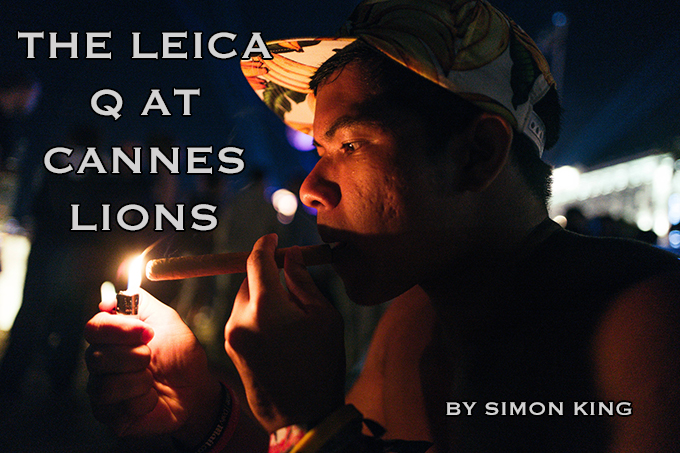
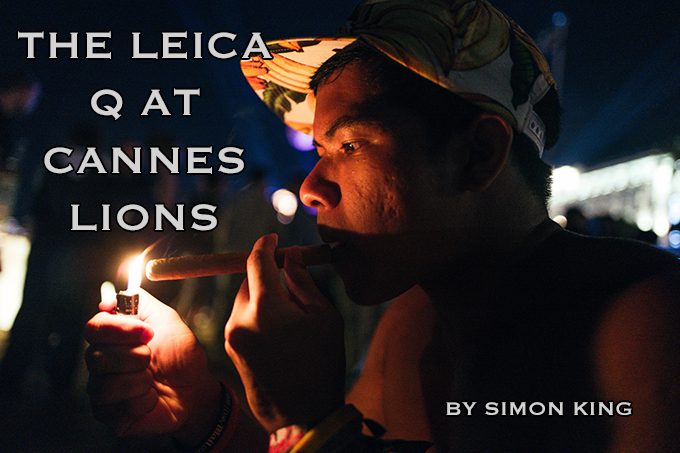
User Report: The Leica Q at Cannes Lions – Low Light
By Simon King – Website HERE
(From Steve: I welcome Simon to this website to deliver his thoughts on some of the coolest rangefinder and mirrorless cameras from Leica, Fuji, Sony and Hasselblad. He is like the London Ken Hansen 😉 I am happy to have him here to write from time to time and if you are near his shop in London, be sure to check it out)
Before owning the Leica Q my “go everywhere” camera was the RX1 by Sony. The RX1 accompanied me across the globe to New York and Rome, as well as staying by my side day to ay in London; on walks through the city and surrounding countryside, at bars and nightclubs, and everywhere in-between.
As such, I used it for a lot of low light shots, and when I purchased the Q this was one of my main concerns. Considering the manufacturer of the Q CMOS sensor was unknown at the time, it was quite the leap of faith to go for another fixed lens compact, rather than heading for a low-light beasts such as the A7S or Sii.
Long story short: the Q surpassed my expectations.
Short story long: The Leica Q accompanied me to the Cannes Lions Advertising festival, 2016. This is known for its late night beach parties, and ambiguously lit events, so it was a great opportunity to put the Q through its paces.
As a Mirrorless camera, the viewfinder (missing from the RX1R) was my main concern. I wear glasses, so getting a good view often can be tricky. However, I found that in all lighting conditions, the Q viewfinder was superb.
In low light, the focus peaking, and magnification are magical. The bokeh from the faux Summilux is severe enough that when a line is in sharp enough relief for the software to pick it up – without fail. Combined with the autofocus that, moving from the Sony, was lightning fast; I can’t say I missed a shot due to focusing issues. Compared to the focus by wire, and sluggish AF of the RX1R the focusing of the Q is perfect.
One small thing I miss from the RX1R is the soft shutter screw mount on the trigger, which the Q being a Bluetooth, NFC, and Wifi enabled machine does not have. Still, the RX1Rii keeps this, despite sharing those features and it would have been a nice throwback to the M heritage to include it.
My Q has travelled with me to Cannes and Monaco, has been used for fashion shoots and street. It has survived kayaking, heavy rainfall, sand and (unfortunately) a few drops on concrete. You can read anywhere on the form and durability of this camera, its well crafted hoot and grip (which I choose to augment with the Thumbs Up), the smooth buttons and dials and beautifully implemented macro ring. I wouldn’t want to comment on these without first consulting a poet, and a psychiatrist.
The 28mm focal length is not that foreign from the 35mm of the RX1, requiring only a step for the same framing. The crop function is not something I used at all, I prefer instead to edit down in Lightroom.
If I feel I need to be closer for a portrait then I step in. Despite the wide angle lens, the rendering and classic Leica-lack of distortion make this a very interesting offering for portrait. For landscapes I step away. The crop feature, while novel, does not offer anything I haven’t already implemented in my workflow.
The sensor, in terms of dynamic range, is wonderful. When raising shadows I don’t feel as if I am limited. The combination of lens and sensor resolves fine details, which makes cropping feel natural and smooth. Almost every shot shown in this article were cropped in some way.
Low light performance is simply magical. Setting the ISO to 25,600, leaving the aperture open and handholding at 1/60th you can get a keeper 90% of the time. Spot metering works best for making sure you hold your subject if you leave things on auto ISO.
And when set to B&W there are no noticeable defects that aren’t rendered with an organic film-like speckle.
My auto ISO I have topped out at 10,000 which I feel is more than enough to deliver near perfect images that can easily be touched up and de-noised. The Q adds its own noise removal to certain photos, as well as applying its own recipe to the RAW files which deal with things like cropping corners down from the more circular image the camera actually captures.
The Leica Q is available to order from our website www.theclassiccamera.com, and you are always welcome to drop into our London store for a consultation.
Kindly,
Simon
@theclassiccamera

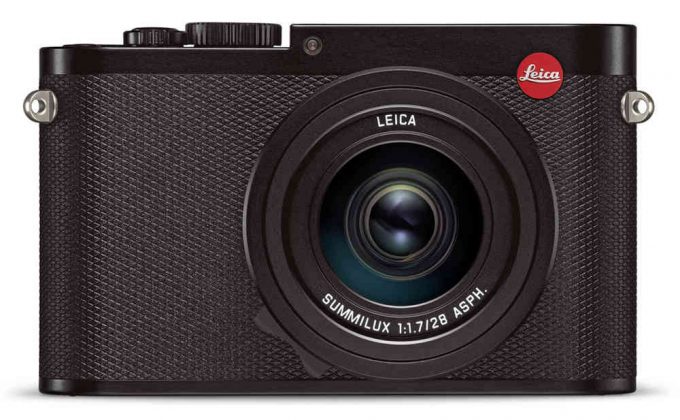
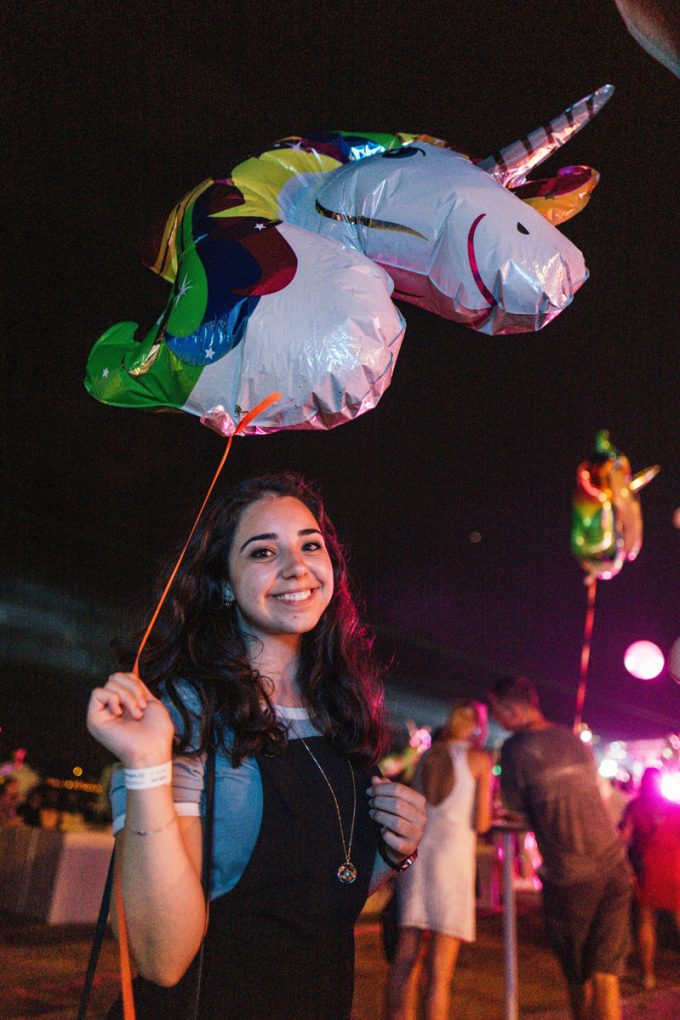
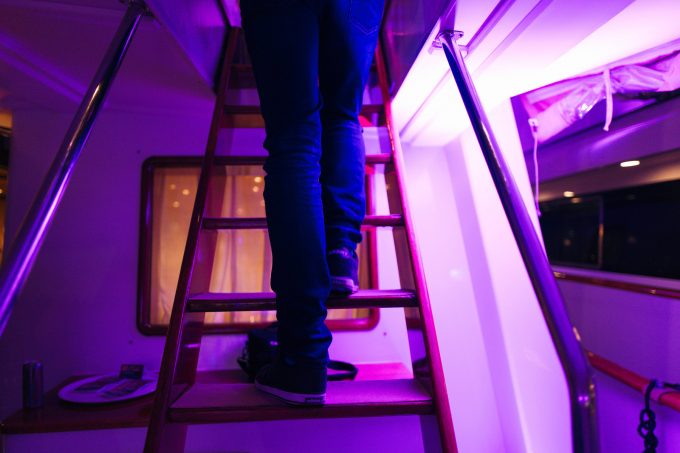
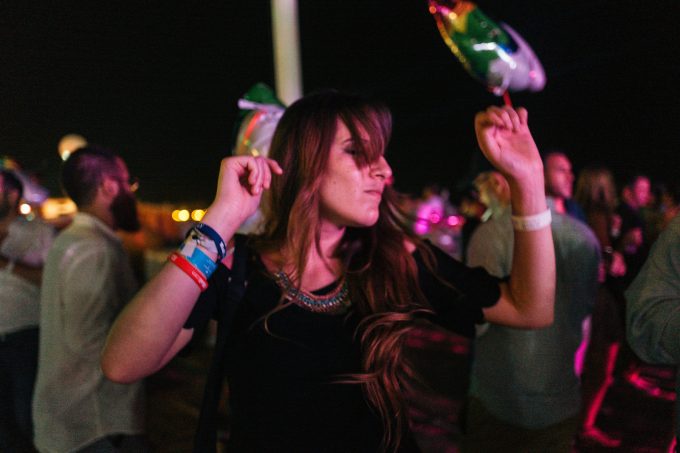
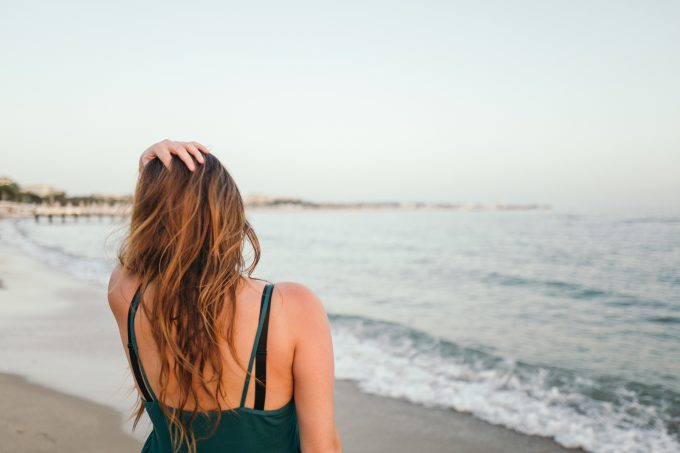
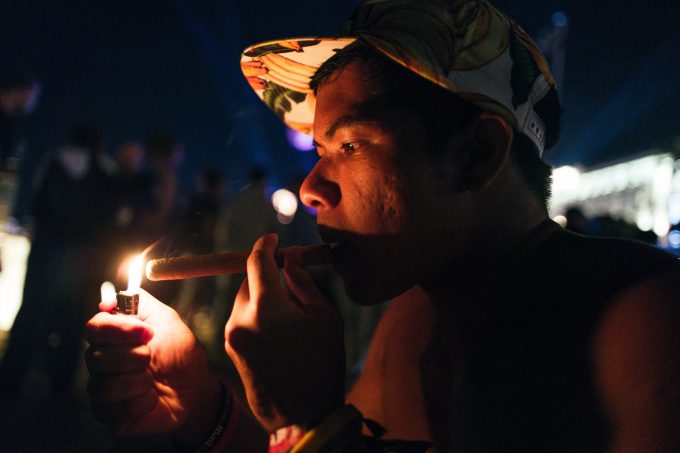
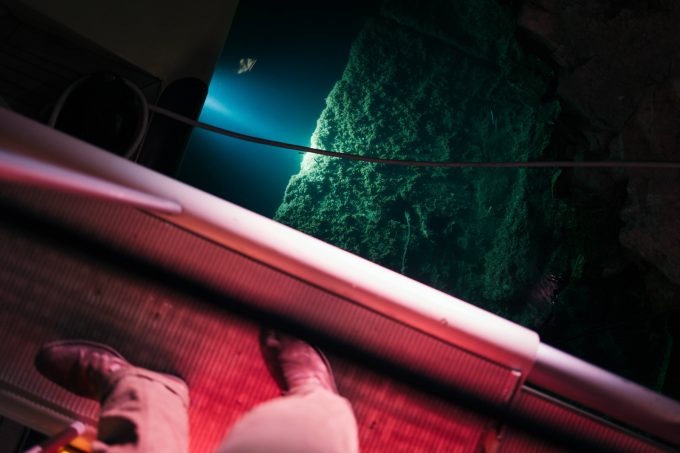
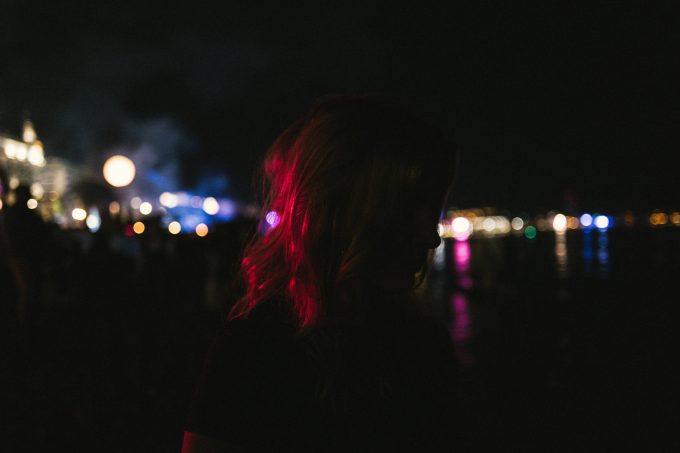
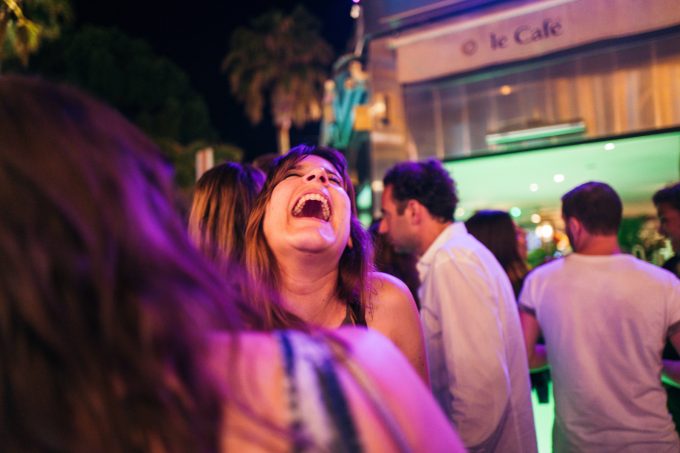
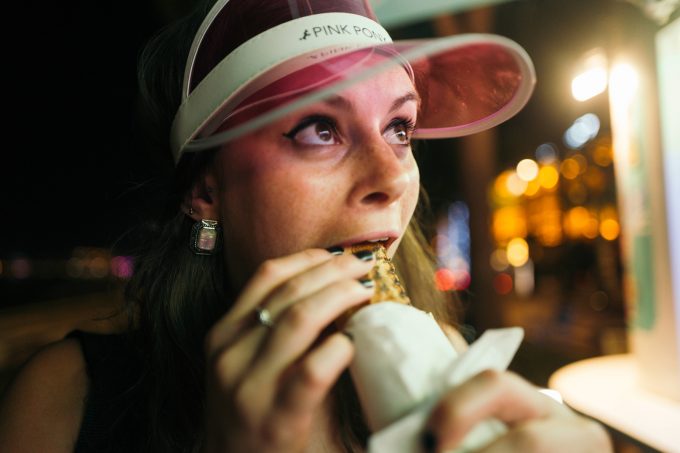
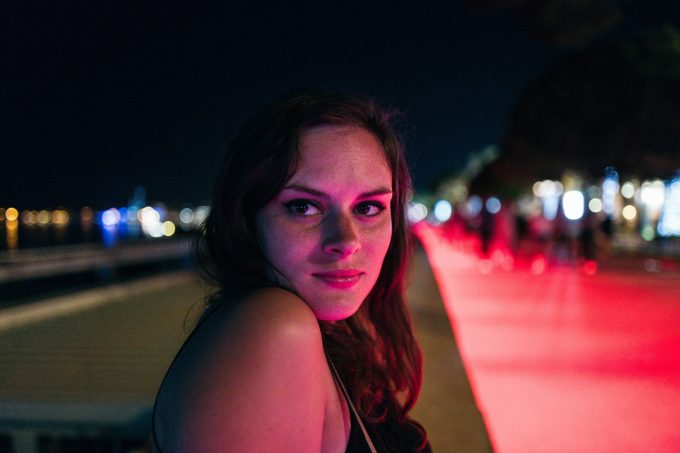

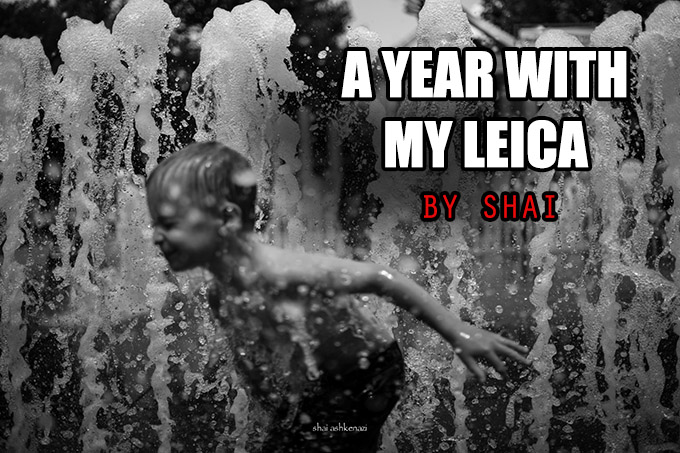

The frame selection option continues to be misunderstood: “The crop feature, while novel, does not offer anything I haven’t already implemented in my workflow.” You’re absolutely correct! But that’s not what it’s for. It’s for framing the original image and making sure the one you want is exactly centered in to sensor. These are not fake 35mm or 50mm perspectives. They are exact, if you remember the demonstration of this in the photo text books. The middle 50mm frame lines of of a 28mm perspective is exactly the same as if you’d used a 50mm lens. The advantage, if say you know you want to take a head shot (see your photos above) portrait is that you an shoot the original exactly how you want it to be from a 50mm perspective (less megapixels, of course, but enough for an 8×10 or larger print without blowing it up. The saved jpg image shows that 50mm image that you decided to take at the time. The raw image that is saved is the entire 28mm image, which can still be trimmed or cropped any way you want it, including the jpg you have as a reference for a 50mm perspective. So, it does not affect post processing of the full image; it’s main use is when framing the original shot in the field. I often switch to 35mm frame lines when what I want is smaller that the full 28, or if smaller yet (say a house up on a hill framed by trees), then 50mm to begin with. Hope this helps. Aid in shooting, not finishing. [Just back from Switzerland: the Q worked extremely well for landscapes and photos of the snow-covered Matterhorn, as well as 50mm portraits with blurred landscapes in the background at f1.7 Color superb. Ease of use beyond comparison.]
Am I the only one who finds the shots reddish?
I owned the Q for some time but was not convinced by its low light capabilities nor by its build quality when considering the price… For me, the RX1RII was a better catch – smaller, better DR. I agree that some of the pics shown here are not speaking for the camera’s capabilities – could have been shot with a mobile phone. Under similar conditions, the RX1RII shows far less noise. Cheers, Martin
I love my Q for its usability, design, UX and image quality. But it does have an occasional banding problem. Sometimes unpredictable. It’s a sad fact, but hey, there’s no perfect camera.
The Q is definitely terrible in low light. I don’t want to critic the images, but they do show why the Q is not the best option for low light photography. Actually is far from it. Pushing the files under not so good lighting conditions just shows how fast the images deteriorates. I wouldn’t recommend anyone looking into shooting in such conditions to get a q.
Yeah..I thought the same thing. Really not that good at all.
Depends on, what you mean with Low Light. Dark as in an A… from an ape? Then use a flash
When not, read or better, you’re english, watch:
http://www.messsucherwelt.com/?p=2260
http://www.messsucherwelt.com/?p=5080
Often, behind the Lens is the problem. Not the cam.
I see i-phone type of shots.
The Q shares the same focal length with the iPhone, and composition is as familiar as it is similar when using one.
Hi there, I like the camera and I thank the reviewer for his efforts, I can’t help to notice that picture 1 seems to exhibit the “”infamous” banding typical of this camera. Can the reviewer comment? Thanks.
Hi Enrico!
The banding issue is something that I was aware of during my post processing of these images, as well as something I was aware of when I actually purchased the camera.
Banding on the Q sensor will normally be incurred when an image is pushed two or three stops, and is rarely an issue in correctly exposed shots.
The first image was taken using a centre weighted metering mode, which exposed for the flashing strobe you can see to the right of the composition in purple. Because of this I was forced to adjust the image afterwards.
I don’t find banding to be an issue, or even to be a deal-breaker in an image. Most cameras will reveal some degree of grain when pushed in post, and I think the DNG file handled my treatment admirably, considering the context.
I hope that satisfies you!
Hi Enrico!
Banding tends to occur when an image is pushed three or four stops after the exposure has been taken. In the first image I had exposed for the lights which you can see to the lower left of my subject, and I ws forced to adjust the shadows.
Most of the time, if you correctly expose the image in-camera, you will be very unlikely to see any banding whatsoever.
Thanks a lot for your comments, much appreciated.
Cheers
Average Shots. Love the Q!
Great review with clear, focused words that gave a good flow for reading it through.
Looking forward for your next post for which we should not wait long as Photokina is around the corner and a new M is waiting to be reviewed.
Thank you, Michael!
Waiting in anticipation for Photokina, I’m certain we can expect some large news!
You’re welcome.
😉
According Photokina – I’m quite sure we’ll not be disappointed of the upcoming M model.
I think number 1 is the most mood-lifting photo I’ve erver seen! Should be viewed daily when down in the dumps! How do you find the Q generally for portraits with its 28mm focal length?
Hi John!
Usually a 28 will offer fair distortion, but the Leica 28 Lux on the Q is both optically precise, and has software tailored to remove this. I’d find this affects portraits in only the closest situations, and that it would not be noticeable in the majority of scenarios.
This photographer shot portraits at Comic Con, and shows quite clearly the capabilities as a portraits camera.
http://www.l-camera-forum.com/topic/261011-comic-con-portraits-with-the-q/
Thank you for your reply, Simon, and the introduction to an amazing photographer!
Great shots! Love the Q!